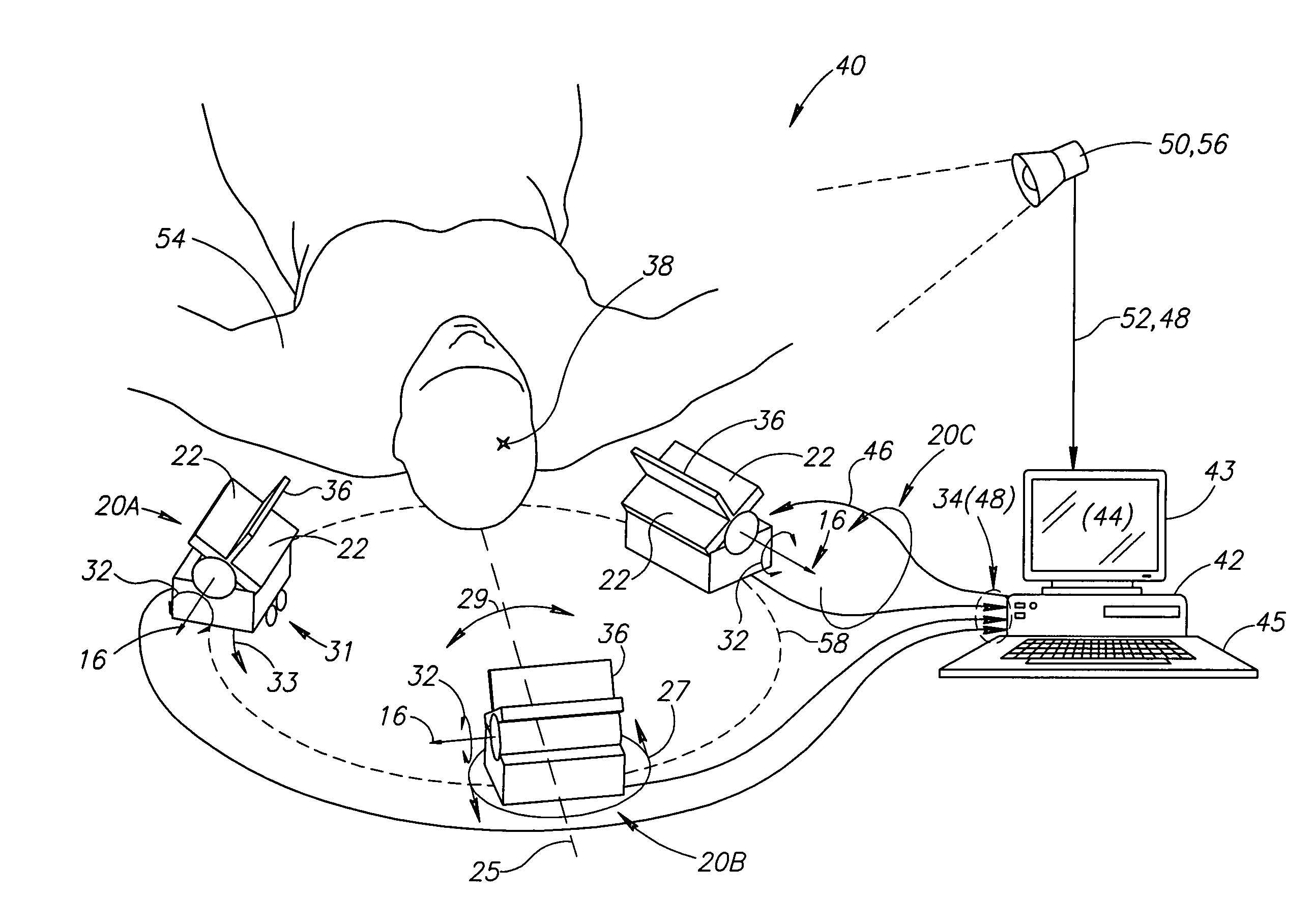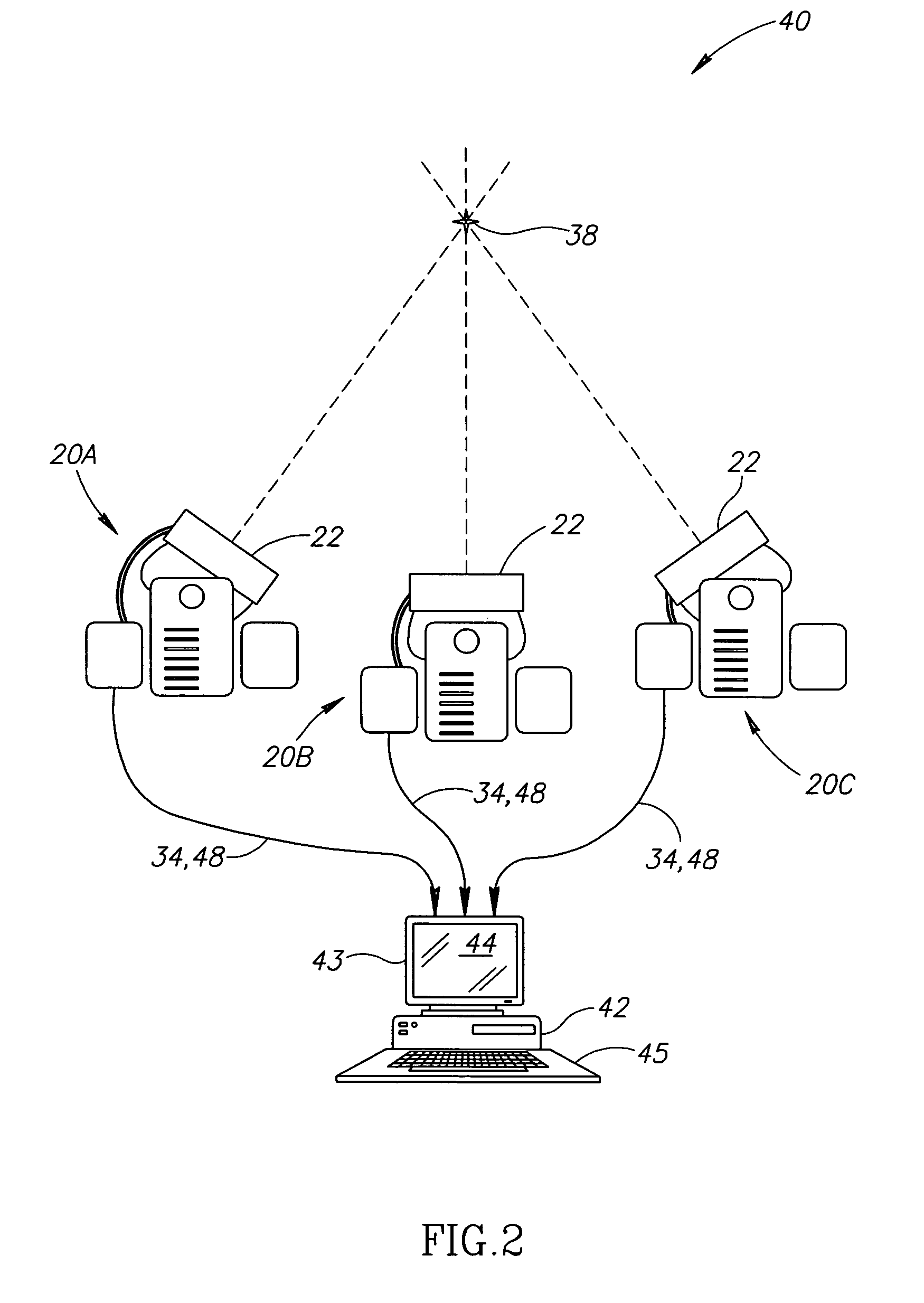Localization of a radioactive source
a radioactive source and location technology, applied in the field of location and tracking of ionizing radiation sources, can solve the problems of radioactive exposure for subjects and medical staff, and achieve the effect of reducing the biological effect of patients and/or medical personnel
- Summary
- Abstract
- Description
- Claims
- Application Information
AI Technical Summary
Benefits of technology
Problems solved by technology
Method used
Image
Examples
Embodiment Construction
[0165]According to one embodiment of the invention (FIGS. 2 and 4), a computerized system 40 locates and / or tracks a device. In the embodiment depicted in FIG. 4, the device is a medical device. Medical devices include, but are not limited to, tools, implants, navigational instruments and ducts. Tools include, but are not limited to, catheters, canulae, trocar, cutting implements, grasping implements and positioning implements. Implants include, but are not limited to, brachytherapy seeds, stents and sustained release medication packets. Navigational instruments include, but are not limited to, guidewires. Ducts include, but are not limited to, tubing (e.g. esophageal tubes and tracheal tubes). In exemplary embodiments of the invention, one or more moving tools are tracked.
[0166]In an exemplary embodiment of the invention, position of the source is determined by non-imaging data acquisition. For purposes of this specification and the accompanying claims, the phrase “non-imaging” ind...
PUM
 Login to View More
Login to View More Abstract
Description
Claims
Application Information
 Login to View More
Login to View More - R&D
- Intellectual Property
- Life Sciences
- Materials
- Tech Scout
- Unparalleled Data Quality
- Higher Quality Content
- 60% Fewer Hallucinations
Browse by: Latest US Patents, China's latest patents, Technical Efficacy Thesaurus, Application Domain, Technology Topic, Popular Technical Reports.
© 2025 PatSnap. All rights reserved.Legal|Privacy policy|Modern Slavery Act Transparency Statement|Sitemap|About US| Contact US: help@patsnap.com



